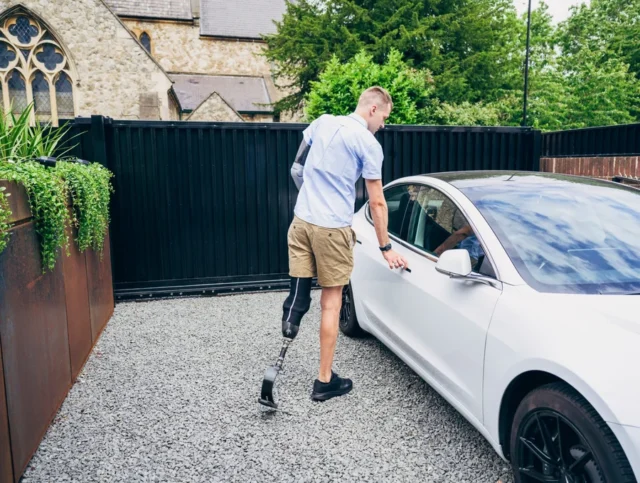Wheelchairs vs mobility scooters
Both wheelchairs and mobility scooters are mobility aids that provide those with reduced mobility the freedom to move around. But how do you know which is right for your needs?
We delve into the differences between wheelchairs vs mobility scooters and share guidance on what to consider when looking for your new mobility aid.
Understanding wheelchairs
Firstly, let’s understand what wheelchairs are and how they work. As their name suggests, they are chair-like in design with large wheels that the user physically pushes, whilst seated, to move forward. Electric wheelchairs are available that are battery powered and controlled via a joystick, eliminating any physical strength required to operate.
Exploring mobility scooters
Mobility scooters also enable you to remain seated whilst moving around, but are different in style. They are powered by electric batteries and have handlebars which you use to control and accelerate, much like a motorcycle.
Key differences and suitability
Now that we have established the base designs, we can explore pros and cons of electric wheelchair vs mobility scooter and the key differences and features between wheelchairs vs mobility scooters.
Wheelchairs are versatile and can be used both indoors and outdoors. Manual wheelchairs are especially ideal for indoor spaces as they are highly manoeuvrable around tight spaces, but do require upper body strength and physical effort for operation. A powered wheelchair removes the requirement for physical strength, making them more suited for those with reduced mobility in the upper body, but are bigger and bulkier in design. This is great for rougher terrain outdoors, but not as manoeuvrable in smaller indoor spaces.
Looking at mobility scooter vs electric wheelchair, mobility scooters are also suitable for individuals with limited upper body strength due to being battery powered. Compared with a manual wheelchair they are typically designed with larger wheels to accommodate various outdoor terrains. This includes pavements, parks and roads.
Personal factors and lifestyle considerations
While choosing between a wheelchair vs mobility scooter, you should outline your specific needs, physical capabilities and lifestyle. This is essential to ensure the mobility device aligns with your individual preferences.
How will you be able to comfortably operate the mobility device? Where do you need and want to use it? What would be a comfortable seating position? What sort of activities or tasks will you be carrying out? And how often? Do you have the space to store it safely?
Financial aspects
Of course another huge consideration when looking to purchase a mobility device and comparing an electric wheelchair vs mobility scooter is price and funding options.
Mobility scooters, manual wheelchairs and powerchairs vary in price quite significantly so it’s important to shop around and select one that will not only meet your needs now, but for as long as possible.
There are a variety of mobility scooter grants available and most mobility retailers offer finance packages across their mobility devices so we highly recommend speaking with their sales advisors to explore your options.
Seeking professional help
It’s incredibly important to seek expert advice from a doctor or a qualified medical professional to ensure you choose the correct mobility aid for your individual requirements.
Getting a mobility scooter or wheelchair is really the first step in retaining or regaining your mobility. But travelling further afield with it is what truly unlocks your freedom and independence. At Mobility in Motion we have a range of vehicle adaptations which enable you to lift and load your mobility device into your vehicle. Get in touch with us to find out more about our solutions and how we can help you or call us on 0800 288 4422.
If a mobility scooter is the right option for your needs and requirements we have further blogs on buying a mobility scooter and how to use a mobility scooter to aid you moving forward.

Accessible travel
The Best Cars Currently Available On The Motability Scheme
The Motability Scheme is fantastic for disabled people, providing them with the opportunity to lease a brand-new car using their qualifying Mobility Allowance. With so many…

Accessible travel
The Future of Electric WAVs: Overcoming Challenges & Embracing Accessibility
Discover the challenges of Electric Wheelchair Accessible Vehicles (eWAVs) and how our innovative adaptations are paving the way for accessible EVs today. Explore our insights into…

Driving with adaptations
Cost-Effective and Reliable Driving Aids for Amputees: Our Recommendations
Life after limb loss and amputation doesn’t have to mean the end of driving. Although it can affect your mobility and driving ability, there are a…